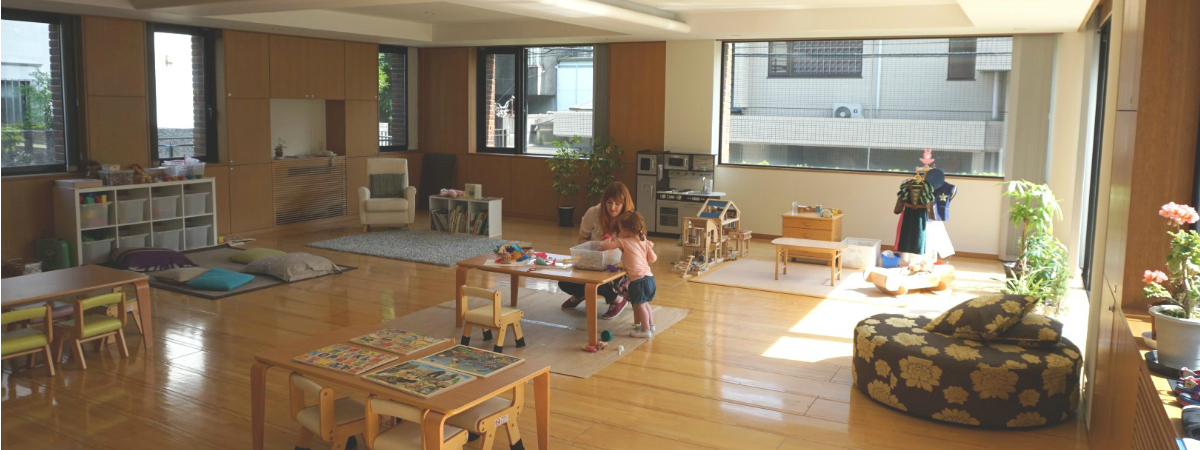These days, parents in Tokyo have a great deal of choice when it comes to international education. New schools are established each year, keeping pace with a steady increase in both the number of expats in Japan, and in interest in foreign language education among the Japanese. But with so many schools out there, how can parents make the best choice for their child?
Most modern approaches to education stress the importance of student-led learning, where teachers act as facilitators and supports of activities, rather than prescribing and restricting children to specific tasks. In order for students to have the freedom to choose activities based on their own interests, ideally the student-teacher ratio should be kept as low as possible. However, few schools have the numbers that allow them to give children that kind of freedom.
Tokyo Children’s Garden is a preschool that opened in April 2017 which incorporates a range of modern educational approaches. By keeping student numbers low, it aims to create a learning environment that maximizes the potential of the student-led approach. I visited the school a few weeks after it opened to learn more about its goals.
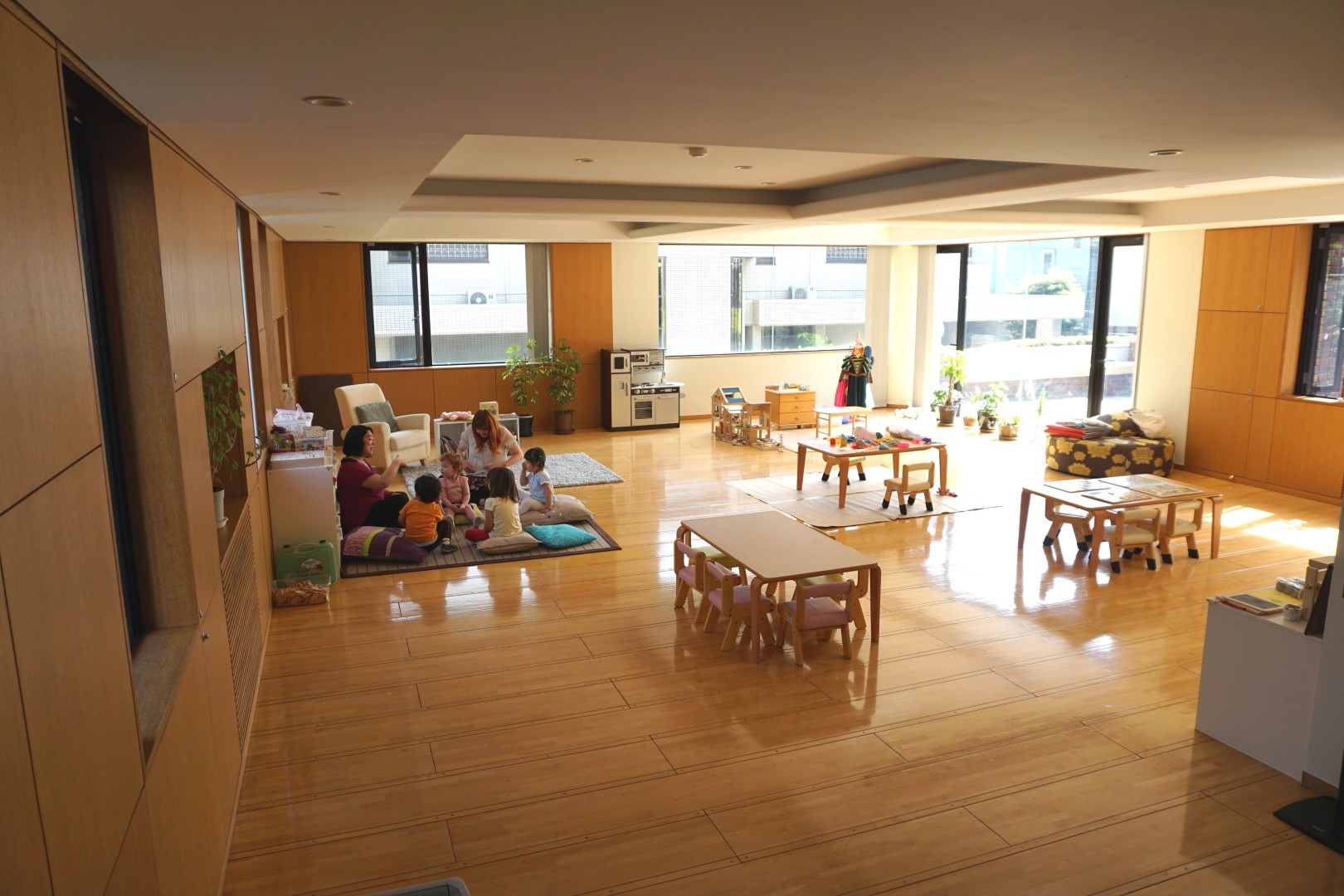
Tokyo Children’s Garden is located in the quiet Ikedayama area of Shinagawa ward, close to Gotanda station. On entering the school, based in a modern-style brown brick building, the first impression you get is one of space. Over a single floor, the school occupies 300m², which includes a large activity room, two smaller rooms suited for focused group activities or story time, and a spacious balcony. While the school has space to comfortably accommodate more than sixty students, founders Ann and Hisao, who have extensive experience in both education and school management, plan to take on no more than eighteen children at full capacity.
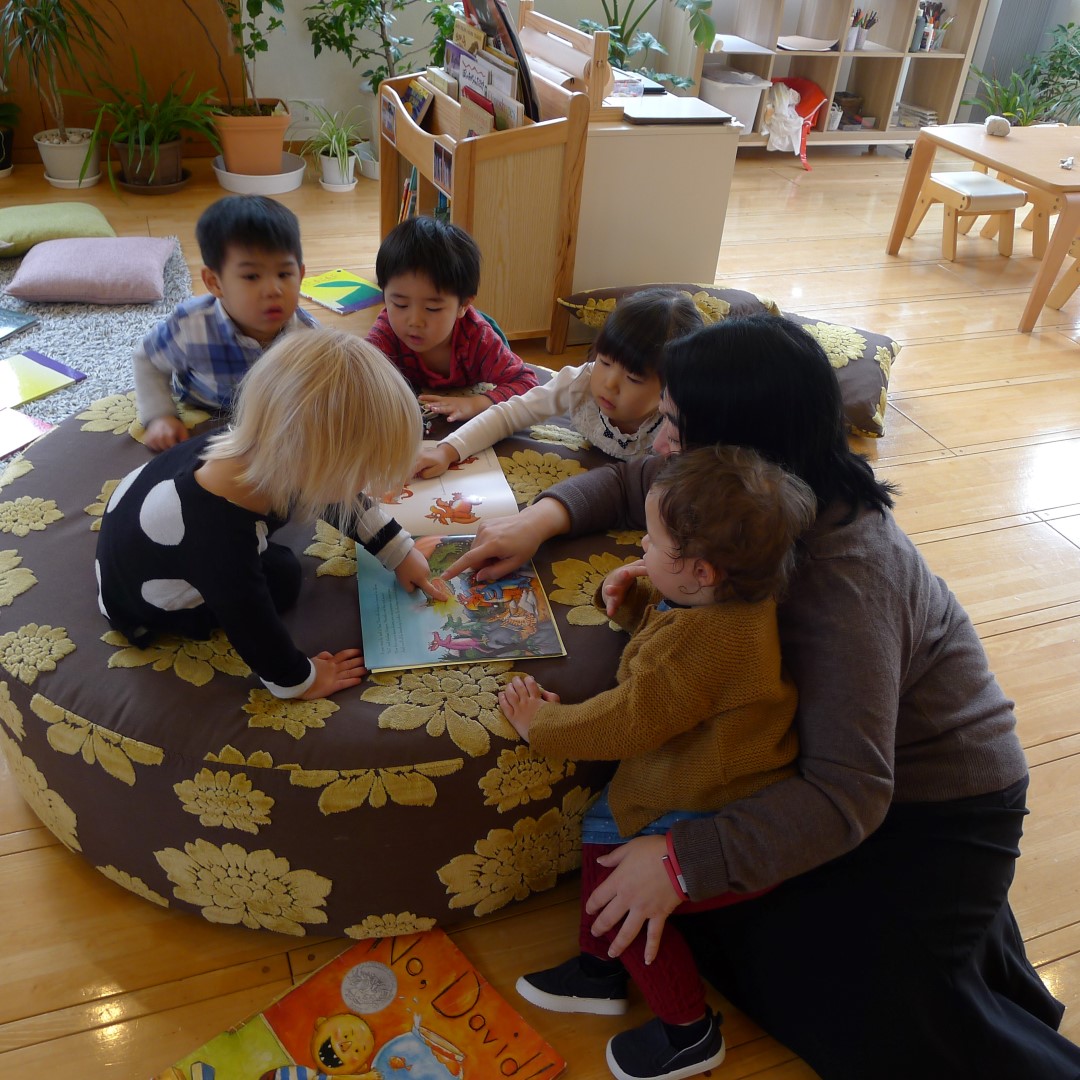
On the morning of my visit, Ann shows me how a typical day begins. Three “learning centers” have been set up at tables in the activity room, and the children are already taking an active interest. One of the learning centers has a number of simple jigsaw puzzles, another is an art station with paper, glue and plastic jewels, while the other has triangular prisms and shiny paper. Ann explains that the latter two learning centers are part of an ongoing project about light. The kids are free to engage in whatever activity catches their interest, and teachers are on hand to encourage and support them. Aside from the learning centers, there are books, toys, and clothes for dress-up – all of which the children have access to. As the student-teacher ratio is low, teachers have the leeway to allow children to pursue their own interests, rather than confine them to specific activities.
TCG’s student-led approach to learning is inspired by Reggio Emilia, but is informed by a range of educational philosophies. Rather than having a strict curriculum, the school encourages children to learn in response to their own interests, and adapts its program accordingly. The current project based on light, Ann explains, came about when the children became interested in how light shining through prisms and translucent paper created colored patches on the floor. Ann and the teaching team picked up on this and developed activities based on that theme to allow further exploration of the subject. These projects are allowed to evolve organically rather than being tied to a timetable, and will last as long as they are relevant to students’ interests.
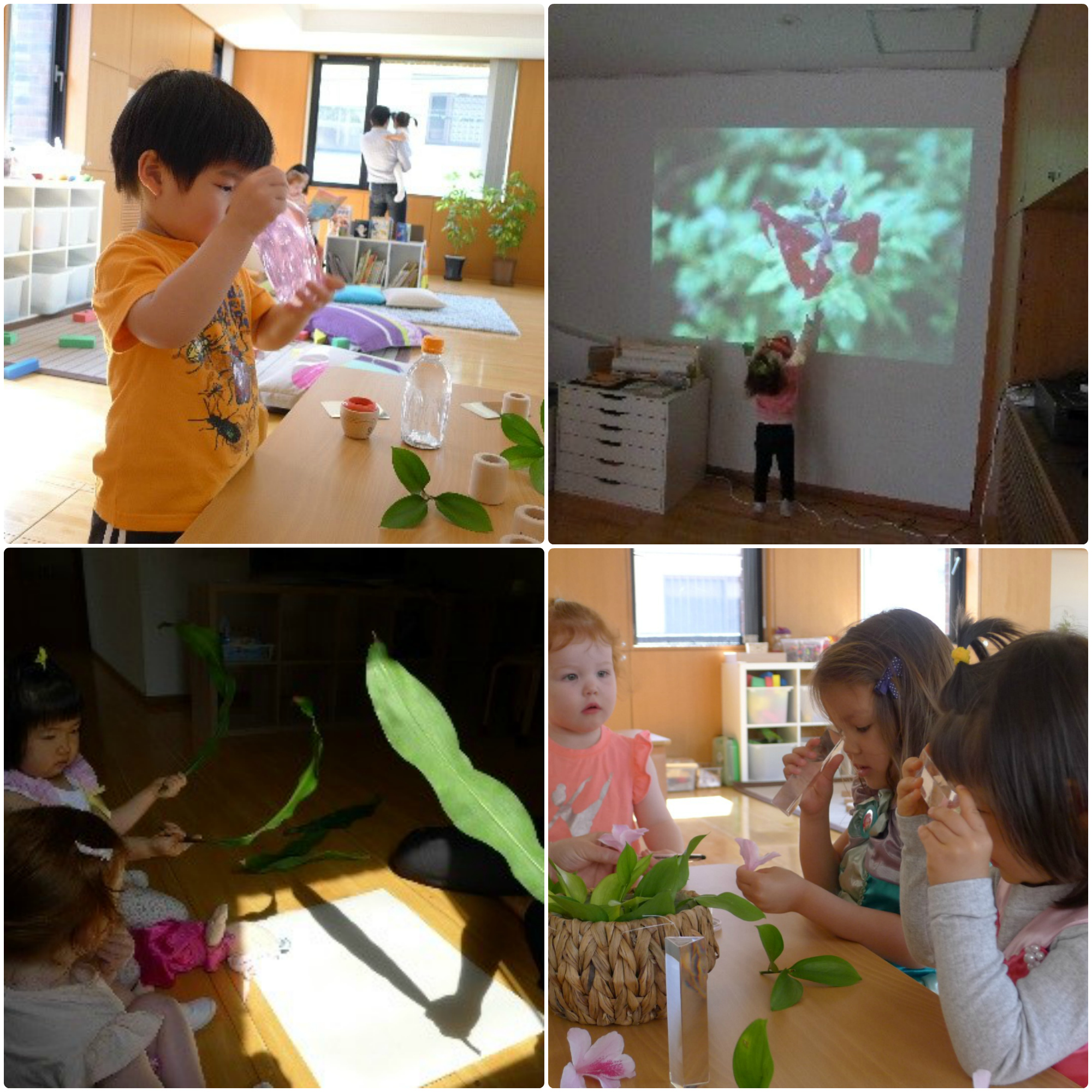
These activities were part of the project about light.
Progress towards developmental milestones is tracked through careful observation and record keeping. Thanks to the low student-teacher ratio, teachers have the freedom to watch individual children and take notes about they respond to different activities, and how they are developing from day to day and week to week. These notes form the basis of a daily journal which is emailed to parents at the end of each day, and includes pictures of activities and outings.
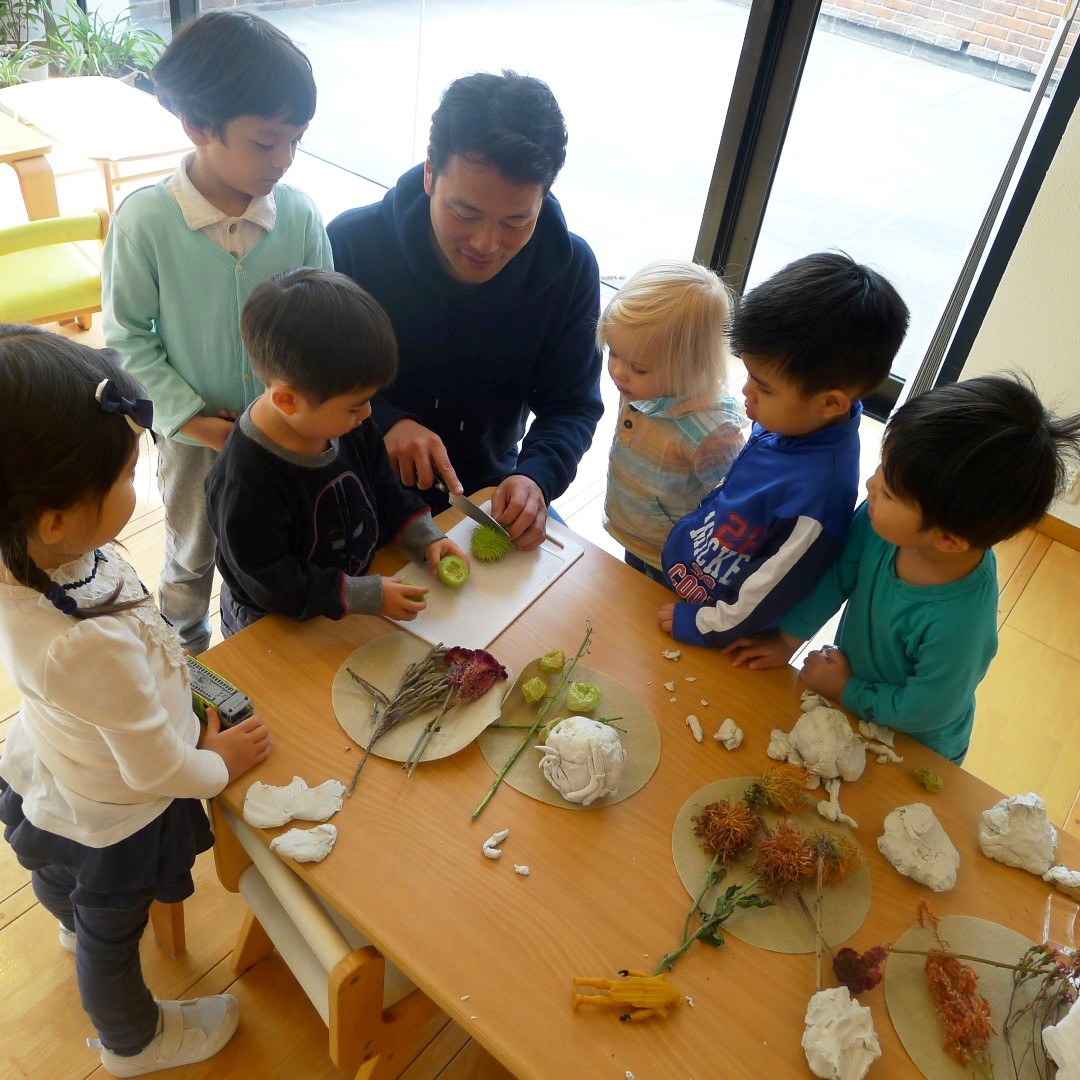
The children learn about plants hands-on.
It is this aspect of the school that Ann and Hisao believe most sets it apart. Hisao compares their approach to how a patient receives treatment in a hospital, where a team of doctors will work together to come up with the best course of treatment based on the needs of that particular patient. No single approach will work for every patient, just as no single approach will provide all children with their best chance to flourish. Each teacher will bring different skills and experience to the table, and all the children can benefit from that collective knowledge. By keeping student numbers low, the school gives teachers the ability to more fully understand the children under their care, and the freedom to apply their own specific skills to assist them in the areas they need the most help.
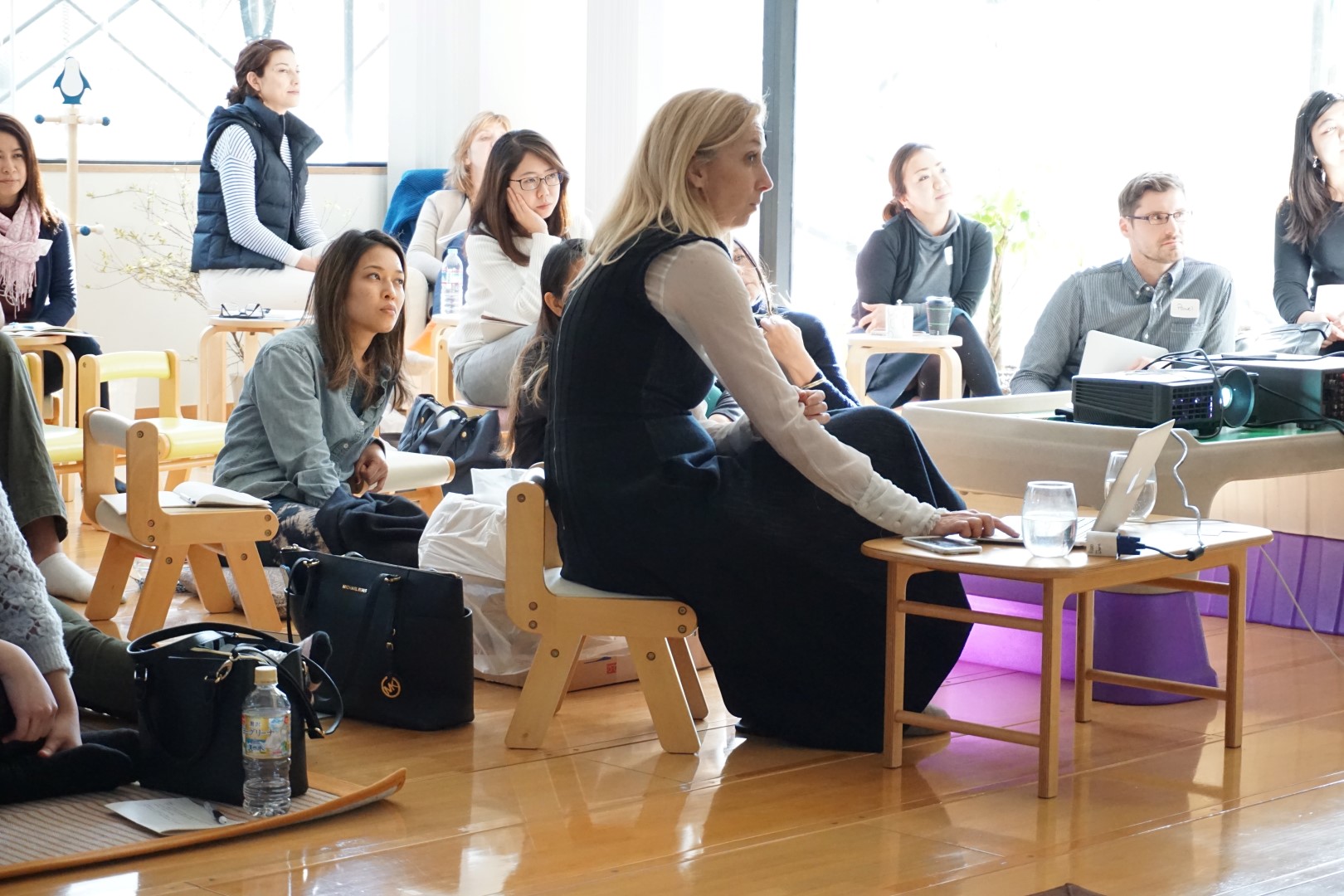
A workshop for parents and teachers.
To learn more about Tokyo Children’s Garden, visit our summary page here,
or visit their website.
